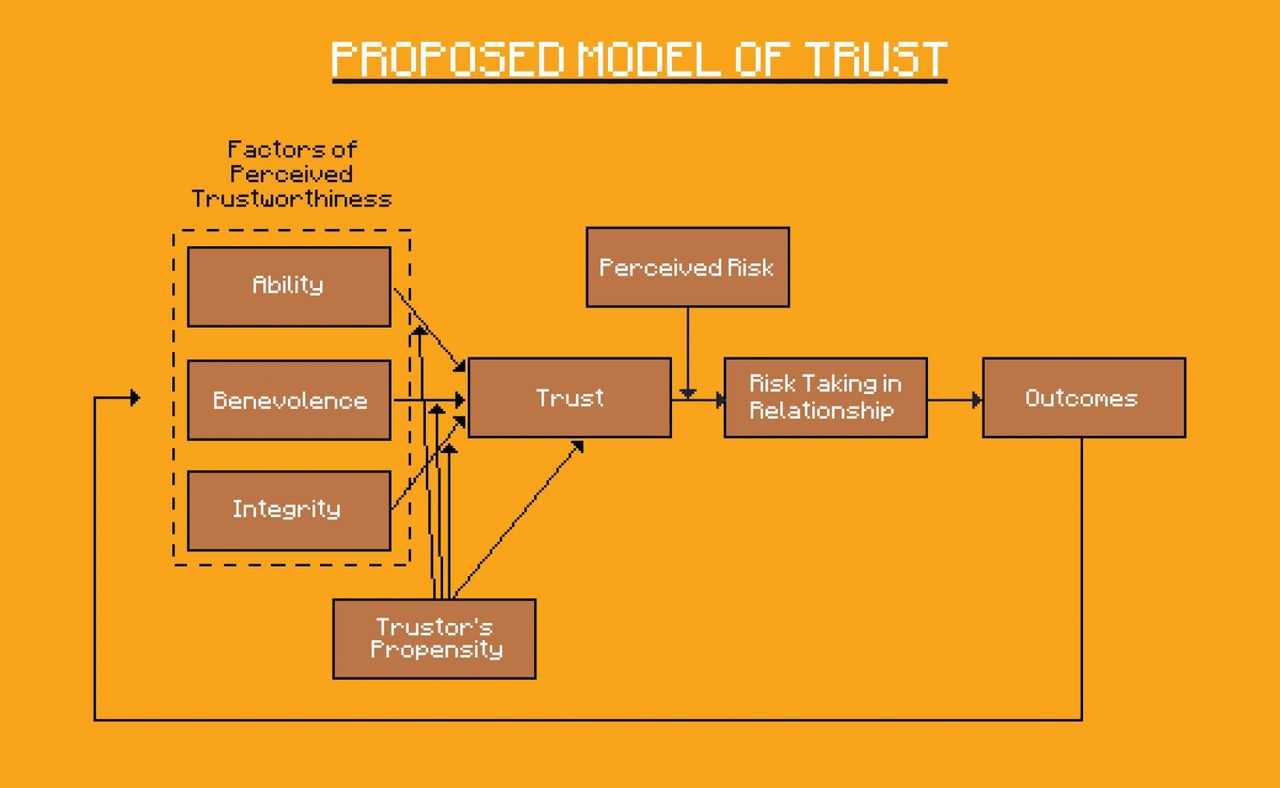Trust forms the bedrock of human connection, yet its construction remains one of our most complex social challenges. In an era where digital interactions often replace face-to-face encounters and where institutional faith wavers, understanding how to build genuine trust has become both more difficult and more crucial than ever.
While we intuitively recognize trust when we feel it—that comfortable certainty that allows us to be vulnerable, to collaborate, to depend on others—the actual mechanics of creating it can feel frustratingly elusive. This exploration delves into the paradoxical nature of trust: how it emerges from shared experiences and values, why it depends so heavily on perception, and what specific behaviors cultivate it over time.
By examining research from thought leaders like Francis Fukuyama, Roger Mayer, and Frances Frei, we’ll uncover the core drivers of trust—authenticity, competence, and empathy—and discover why, ultimately, building trust requires us to take the first leap of faith ourselves.
Trust Builds Through Shared Experiences & Values
Jeffrey Gitomer, in his book ‘The Little Teal Book Of Trust’, mentions that building trust takes time and shared experiences: “You cannot buy trust at any price. But slowly, over time, you can build trust for free… Dealings over time [and] personal relationships lead to trust”.
Gert Jan Hofstede, in his paper ‘Trust and Transparency in Supply Netchains: A Contradiction?’, found that “trust builds gradually through shared experience”.
In his famous work ‘Trust’ Francis Fukuyama wrote: “Out of shared values comes trust. As a general rule, trust arises when a community shares a set of moral values in such a way as to create expectations of regular and honest behavior.” Fukuyama also wrote that, “There is usually an inverse relationship between rules and trust: the more people depend on rules to regulate their interactions, the less they trust each other, and vice versa.”
Trust Is Driven By Perception
While acknowledging that trust builds through shared experiences and values, it is important to note that trust is primarily driven by perception – which can, of course, be manipulated.
“In our experience, trust has three core drivers: authenticity, logic, and empathy. People tend to trust you when they believe they are interacting with the real you (authenticity), when they have faith in your judgment and competence (logic), and when they feel that you care about them (empathy). When trust is lost, it can almost always be traced back to a breakdown in one of these three drivers.,” according to Frances Frei.
In 1995, Roger C. Mayer presented a trust model that has since become very well referenced. The trust model suggested by Mayer can be found below. Note that his drivers of trust are perceived ability, benevolence, and integrity.

Characteristics Of Trusted & Trustworthy People
- To get trust, first give trust.
- Giving value first leads to trust.
- Competency and superior skill leads to trust.
- Straight-forward truth leads to trust.
- Creativity leads to trust.
- Superior knowledge and genuine help leads to trust.
- Superior service leads to trust.
- Understanding leads to trust.
- Willingness to help leads to trust.
- Respect and reliability over time lead to trust.
- Desire to serve with a grateful heart leads to trust.
- Dedication to serving and enlightening others based on heartfelt belief leads to trust.
- Random acts of kindness and the desire to do the best job possible lead to trust.
- Accurate advice over time and friendship without condition or expectation lead to trust.
- Superior performance with passion over time leads to trust.
- Dedication to personal excellence and mastery of a craft leads to trust.
- Friendship based on respect, mutual admiration, truth, and fun leads to trust.
Bringing Together The Pieces
Trust is built through shared values, consistent dealings over time, and personal relationships that demonstrate authenticity, logic, and empathy—where you give trust first, provide genuine value through competence and service, maintain straight-forward honesty, show understanding and care for others, and deliver reliable performance with integrity, creating a foundation of mutual respect that transforms shared experiences into lasting bonds.
Final Thoughts
Trust isn’t just another business metric or social nicety—it’s the invisible infrastructure that makes everything else possible. Without it, every interaction becomes a negotiation, every agreement needs enforcement, and every relationship carries the weight of suspicion.
What strikes me most about trust is its paradoxical nature: it takes years to build, seconds to destroy, and yet we must give it freely to receive it. In our increasingly connected yet fragmented world, this ancient human capacity feels both more essential and more fragile than ever.
The research tells us trust emerges from shared experiences and values, but perhaps the deeper insight is that trust is ultimately an act of faith—faith that others will act with integrity, that competence will meet intention, and that our vulnerability won’t be exploited. It’s a leap we take together, repeatedly, until the leap becomes a bridge.
As you navigate your own trust-building journey, remember that every interaction is an opportunity to demonstrate those core drivers—authenticity, logic, and empathy. But more than that, remember that trust isn’t just about what you do; it’s about who you choose to be, consistently, especially when no one is watching.
In a world that often feels designed to erode trust, choosing to be trustworthy is both a personal commitment and a radical act. It’s how we build not just better relationships, but a better world—one authentic interaction at a time.
Thanks for reading!
